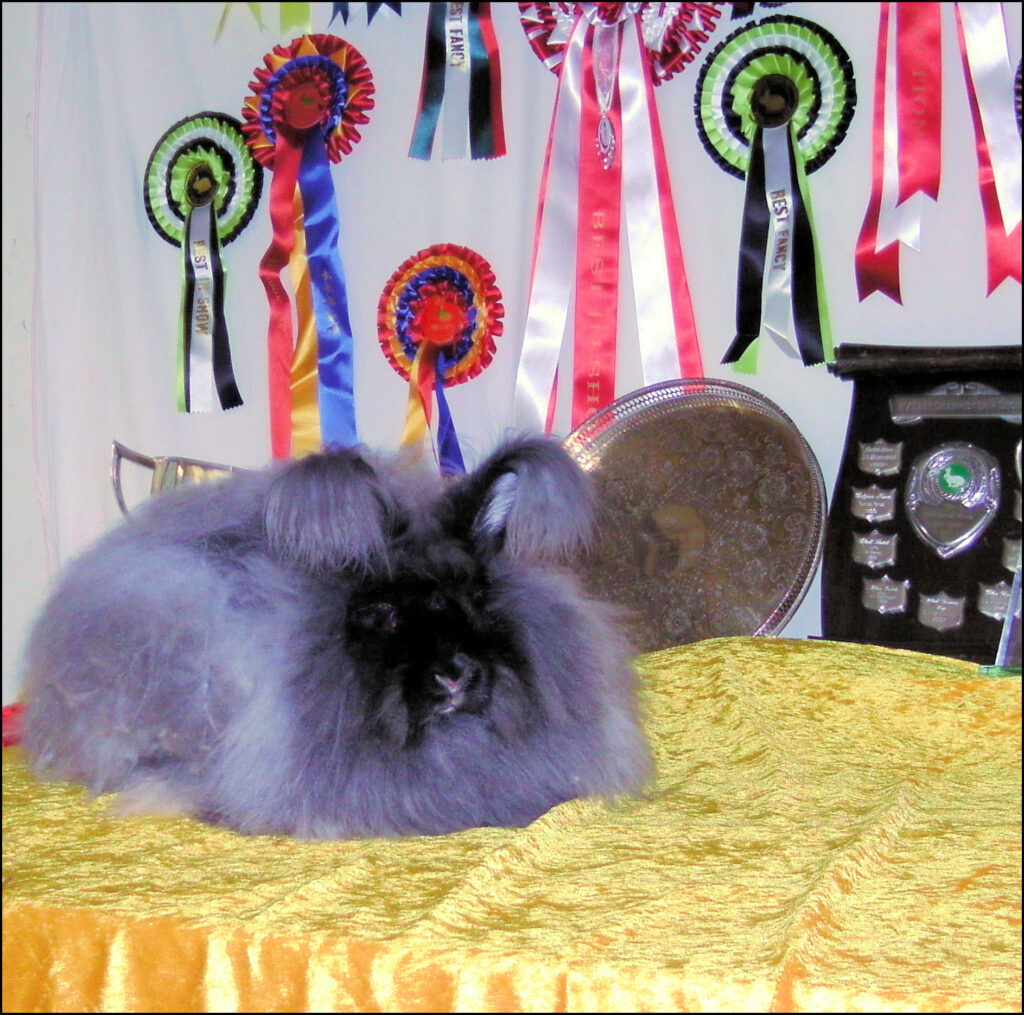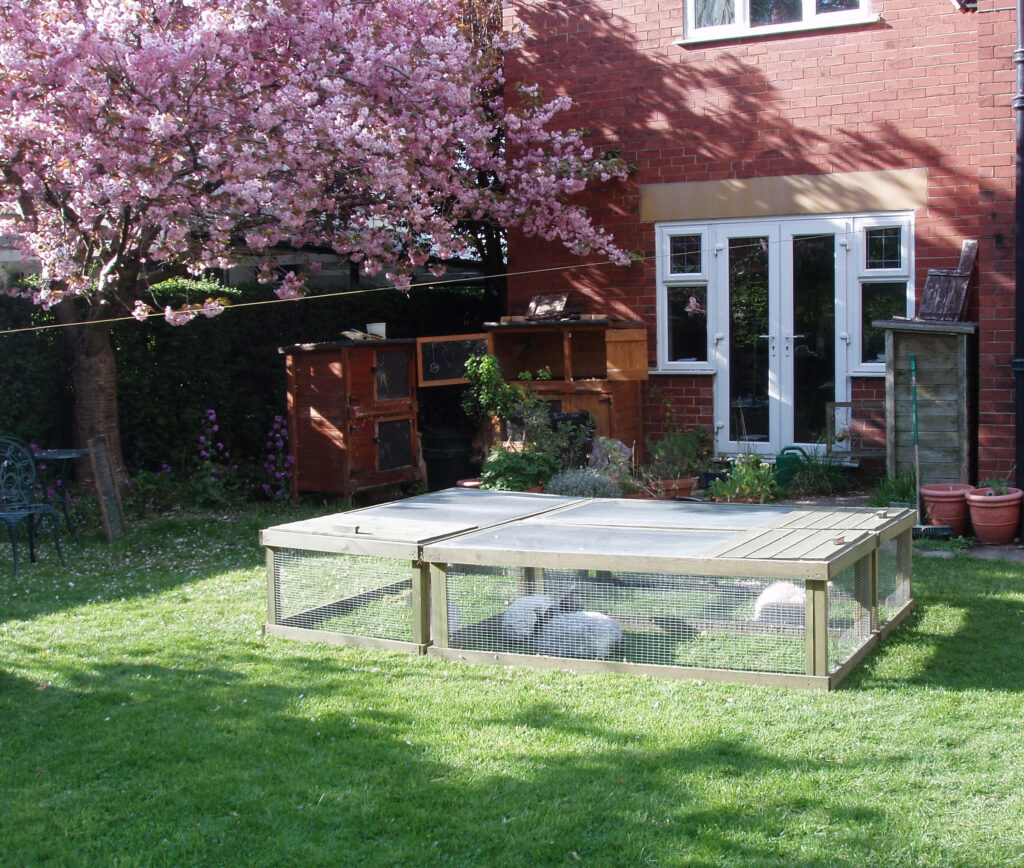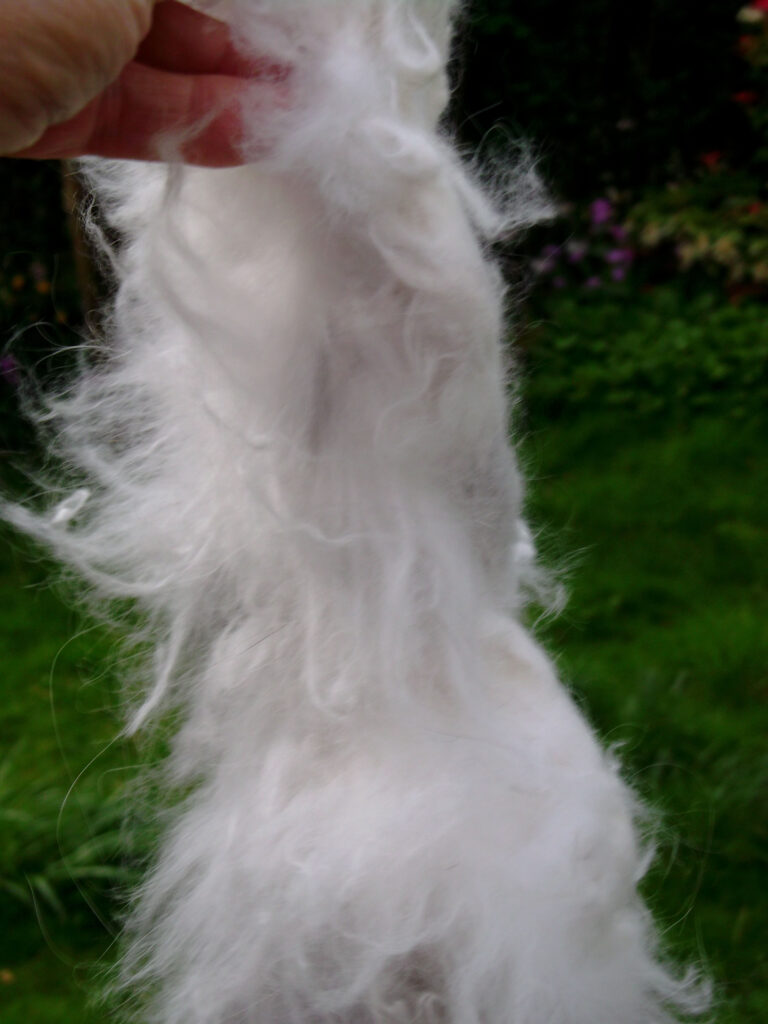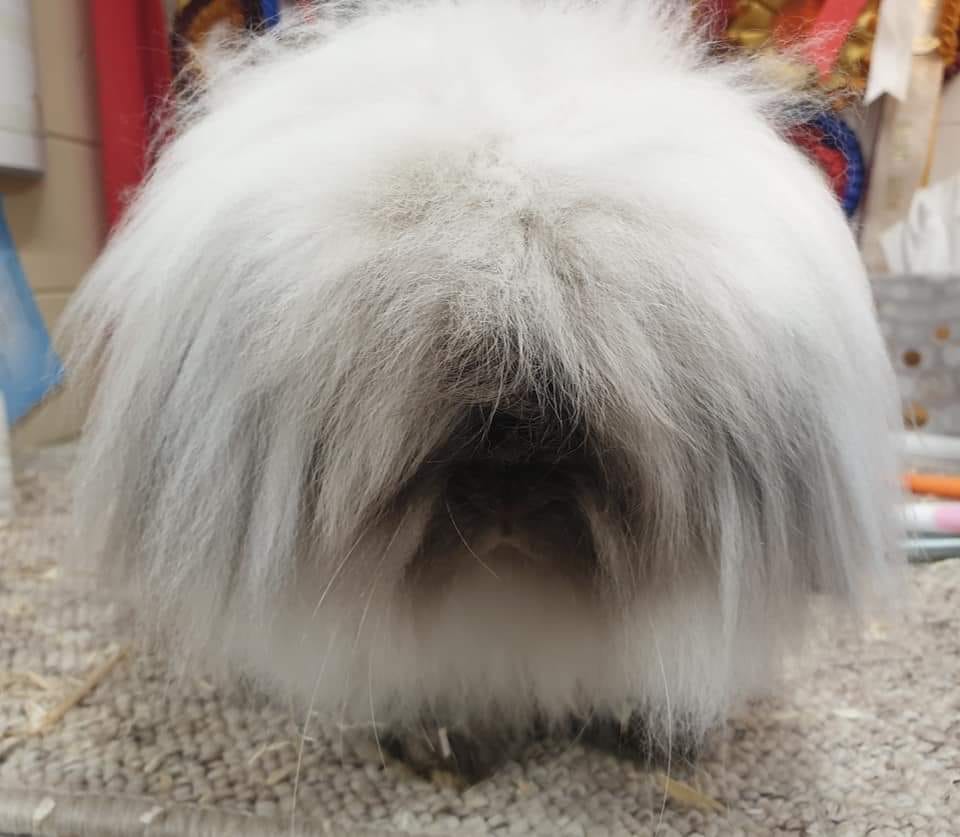
I would really like an Angora…….
An Angora rabbit in full exhibition coat is one of the most attractive sights at a rabbit show. However, before settling on the rabbit of your dreams, it is worthwhile thinking about what rabbit keeping in general involves. Rabbits need a lot of attention and Angora rabbits require extra care.
Here are some of the questions a reputable Angora breeder will ask someone wishing to buy a rabbit, along with some of the questions that a new Angora owner will ask.
Have you kept rabbits before? If so, you will know all the information below.
Rabbits are not easy care pets, and are difficult for young children to handle. They need a suitable indoor or outdoor hutch. This has to be fox, dog and weather proof. They need a secure run. They need feeding once or twice daily and regular exercise. The hutch needs regular cleaning. The rabbit needs regular toe nail clipping and vaccinating annually against myxomatosis and rabbit haemorrhagic diseases 1 and 2. Someone needs to look after the rabbit whilst you are away for weekends and holidays. A well cared for rabbit can live for 10 years.

Are you aware of the pitfalls of two rabbits?
The Rabbit Welfare Association recommends rabbits should be kept in pairs or groups. This is not as easy as buying two 10 week old littermates and expecting them to get on for a lifetime! A pair of bucks, even when neutered, are very likely to fight. Injuries can be severe. A pair of does, unneutered, are also likely to fight once they reach sexual maturity. Two neutered does don’t always get on. Doe rabbits are territorial by nature. If you wish to buy a pair, the best option is a buck and a doe. These are separated when they reach 12 weeks of age to prevent breeding, neutered, then reintroduced carefully. Always make sure you have a plan if the rabbits decide not to get on. Rabbits, like people, have personalities. Unneutered rabbits are best kept singly.

Why do you want an Angora?
Angoras are, in many ways, working rabbits. Their wool grows continuously to a length of 9 inches if not clipped, and they are high maintenance animals. They need clipping three monthly and regular grooming. Grooming takes place once weekly up to daily, depending on the length and quality of coat. Exhibition Angoras are groomed daily.
A hutch with an attached run and access to the outdoors in all weathers is not suitable for an Angora. A wet Angora will felt, mat and become sore. Angoras will lie happily in the rain and ignore their shelter!
Do you want to use their wool? Then all that work is worthwhile. You are very unlikely to make a profit from selling their wool. Keeping Angoras ethically in British conditions is expensive. Keeping an Angora and throwing away the wool is like keeping hens and throwing away their eggs!
Do you want one because they are “cute” or “pretty”? There are other very attractive rabbits, such as Lionheads, that are considerably less work.
Exhibiting
Do you want to exhibit? You need to join the British Rabbit Council and buy a ringed rabbit of exhibition standard from an exhibitor-breeder. The National Angora Club has a list of breeders. You may need to wait a little for a suitable rabbit. Reputable breeders will not have a large stock of rabbits “on the shelf.”
Be wary of Vienna marked rabbits, and rabbits with Vienna markings in their ancestry. These are rabbits with white paws, spots on their noses or coats, white rabbits with black or coloured blotches, or rabbits with broken markings. These rabbits cannot be shown and will pass on these traits to their youngsters for generations. These rabbits are pet quality only, although some will have good coats for spinning.
The ideal Angora
The ideal exhibition, spinning or pet Angora should have a silky coat which is relatively easy to groom. Some poorly bred Angoras have cottony coats which tend to mat, although they are still attractive rabbits to look at. Pet Angora owners are often not aware of differences in coat quality. Coat quality is very important when thinking of ease of grooming and clipping. You do not want to be struggling with a difficult coat for the next 10 years!

Where do I find an Angora groomer?
There are no professional Angora groomers. Dog groomers are usually unwilling to take on Angoras because of the fragility of rabbit skin. Occasionally a dog groomer has an Angora of their own and is willing to help. It is important for you to learn how to clip and groom from your breeder. A reputable breeder will give grooming and clipping lessons when you go to pick up your Angora and also give after sales support. This is considered mandatory for welfare reasons. This is why it is best for a new owner to buy from a breeder within a reasonable distance. If you feel that you would find clipping and grooming difficult, then choose a different rabbit breed.
Can I rescue an Angora?
Sadly, Angoras are now often ending up in rescue centres when people cannot cope with the care of their coats. Be careful when getting a rescue Angora, as not all long haired rabbits in rescue labelled Angoras are truly so. Angoras do not have lop ears. Some rescue “Angoras” are crossbreeds whose coats are very difficult to manage, even for an experienced Angora owner. Some are Lionheads or Cashmere Lops. Ideally take a friend experienced in Angoras to help you choose your rescue rabbit. Occasionally the National Angora Club will know of rabbits that need rehoming due to the illness or death of their owner. A “retired” exhibition or breeding Angora, age 2 or 3, makes an excellent spinner’s rabbit. Coat quality guaranteed!

What is a pedigree Angora? Should I get one?
A pedigree is a list of the rabbit’s ancestors, and in itself is no guarantee of the quality of the individual rabbit. Any exhibition breeder will tell you that not all rabbits in a litter will be show winners, although they all have the same parentage. The pedigree is most useful if you wish to breed the rabbit. It should tell you the colour genes that the rabbit may carry, and can confirm the absence of the Vienna gene. It will also tell you where your rabbit’s ancestors came from and who bred them. For a pet rabbit or a neutered rabbit, a pedigree is not needed.

How much does an Angora cost?
This is a tricky question. As in the dog world, unscrupulous breeders can charge very high prices indeed! Avoid them! A reasonable price would be £50-£100, depending on the quality of the rabbit and the cost of its vaccination. The price of the rabbit usually includes vaccination against RVHD2.
I have thought about all of this and would still like an Angora…
Start off with one Angora, and make sure that you are happy and confident with care and grooming before getting a second rabbit. Bucks make the best first rabbit as they are friendly and playful, and are easiest and cheapest to neuter, if desired. Once you are confident, then decide whether you can manage a second rabbit. A doe is best to add if you want a neutered pair. When she is old enough, get her neutered too and introduce her slowly. If you wish to keep two rabbits together, but don’t want the work of two Angoras, a neutered Angora can be bonded with a neutered rabbit of similar size and different breed. Then join the National Angora Club and learn to spin!
